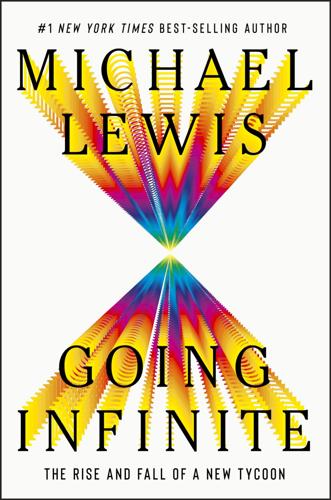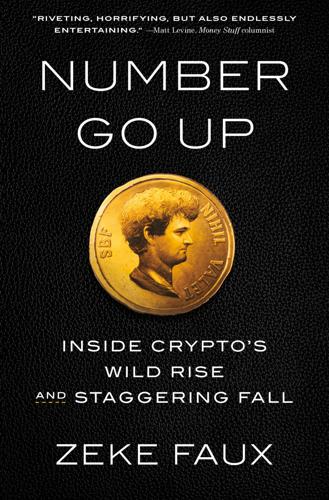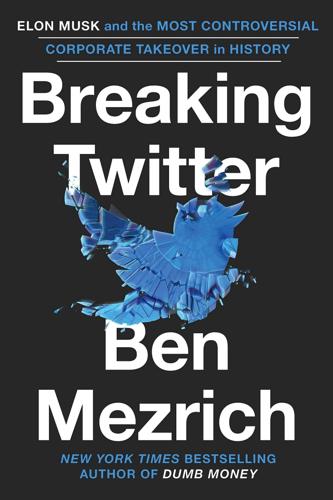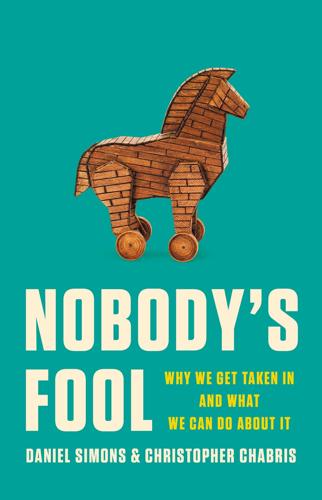
Going Infinite: The Rise and Fall of a New Tycoon
by
Michael Lewis
Published 2 Oct 2023
Three days later, on November 2, the crypto news site CoinDesk published an article about a curious document that appeared to have been leaked to them by someone inside Alameda Research, or perhaps someone who lent money to Alameda Research. It wasn’t a formal balance sheet. There was no sign that it had been audited, or that it presented a complete picture of the contents of Alameda Research, or that it was even real. It listed $14.6 billion of assets and $8 billion of liabilities that were supposedly inside of Alameda Research as of June 30, 2022. What the CoinDesk piece wanted to highlight was that more than a third of the assets were FTT, the token FTX had issued three years earlier.
…
The first one had to do with financial incentives. None of the characters in this financial drama had behaved as financial characters are expected to behave. Gary had owned a piece of Alameda Research, but his stake in FTX was far more valuable. Nishad owned a big chunk of FTX and none of Alameda Research. Ditto Caroline, who ran Alameda Research but owned shares only in FTX. None of these people had any interest in moving money out of FTX into Alameda Research in a way that put FTX in jeopardy. Just the reverse: it might as well have been their money that was being moved. And yet at least up until late spring of 2022, when crypto prices began to plunge, and possibly much later than that, none of them expressed disapproval of the risk being taken with their fortunes.
…
And yet FTX was just a piece of a much larger puzzle of Sam’s design. He owned 90 percent of Alameda Research. And the nature of Alameda Research was changing. It was still a quant trading firm, with its good months and bad months, but its traders were playing, in new ways, with bigger and bigger sums of money. Crypto world had created what were, in effect, unregulated new banks. People would deposit their crypto with, for instance, Genesis Global Capital or Celsius Network, and receive some rate of interest, and these pseudobanks would re-lend the crypto to traders like Alameda Research. In early 2018, rich effective altruists had charged Sam interest rates of 50 percent a year.

Number Go Up: Inside Crypto's Wild Rise and Staggering Fall
by
Zeke Faux
Published 11 Sep 2023
Scum, 150, 158, 159 “the Drowning Child” thought experiment, 81 Drudge Report, 10 drugs at ApeFest, 152, 157 Crypto Capital and, 62 cryptocurrencies and, 19, 28 in Puerto Rico, 116 traffickers in Bahamas, 77 DuckTales, 55–56 E Eagle, Ryan, 100 earning to give, 82–83 Economic Club of New York, 78–79 The Economist, 168 effective altruism movement Alameda and, 86, 223 Bankman-Fried and, 73, 75, 81, 83, 91–92 beginning of, 82 described, 73, 92 “the Drowning Child” experiment and, 81 earning to give, 82–83 Ellison and, 85–86 FTX’s bankruptcy and, 216 Future Fund, 228–229, 231 risk and, 223–224 Singh and, 85 Wang and, 85 e-gold, 37 Eisenberg, Avi, 238 electricity used by “mining,” 18, 20 El Faro, 199 Ellison, Caroline background, 85–86 Celsius and, 164 as cooperating witness against Bankman-Fried, 235 market strategy of, 225 move to Hong Kong by, 223 relationship with Bankman-Fried, 228 run on Alameda Research and, 226 El Salvador Bitcoin as official currency of, 199–201, 202–204 Bitcoin City plan, 201–202 El Zonte, 202–203 Mallers and, 26 Tether in, 203 El Zonte, El Salvador, 202–203 Eminem, 142, 157 environment and “mining,” 20 EOS, 49, 64 Ethereum, 49, 113, 127, 159 EverQuest, 33, 34 F Facing Up to Scarcity: The Logic and Limits of Nonconsequentialist Thought (Fried), 81–82 Fallon, Jimmy, 141, 158 FBI Bitcoins stolen from Bitfinex, 105–107 cryptocurrency cases and, 105 Devasini and Bitcoins seized by, 109 Felch, Alpheus, 71 Ferrell, Will, 17 “fiat money,” 16 Financial Investigation Agency (British Virgin Islands), 12 Financial Times, 138 Fireblocks, 103 Five Star Movement, 44 FODL Finance, 110 Forbes, 3, 74–75, 99, 168 Fortune, 168 Founders Fund, 29 Fried, Barbara, 81–82 FTT, 214, 216 FTX ability to trade “on margin” on, 224, 232 Alameda Research as liquidity provider to, 224 Axie Infinity and, 124 Bankman-Fried on reason for failure of, 232, 233 bankruptcy declaration by, 216, 218 Binance and, 79 Bored Apes and, 154–155 Devasini’s refusal to make loan to, 231 endorsements of, 89–90 founding of, 87 headquarters of, 23 loan to Alameda Research, 223, 226 “mis-accounting” of funds, 228 naming rights for Miami Heat’s NBA arena, 15, 23, 89 “pig butchering” and, 231 professional video-gaming team sponsorship, 89 relocation to Bahamas of, 77–78 revenues, 79 run on, 214–215 success of, 88 Tether and, 23 venture capital and, 74, 89 Yuga Labs and, 154–155 Zhao and, 213, 215–216 Future Fund, 228–229, 231 Fuxa, Marco, 42, 47 G Galois Capital, 236 Gambaryan, Tigran, 105 Gambling Apes, 159 GameStop, 10 García, Mario, 202–203 “Gargamel,” 144 “gas fees,” 149 Gemini, 166 Genesis Global, 166 George, Errol, 12 Gerard, David, 167 “Gilfalicious” (Morgan), 99 Glenn, Martin, 241 Global Anti-Scam Organization, 175–176, 178 “gold farmers,” 34 Goldman Sachs and IGE, 34 “Gordon Goner,” 144, 156 Green, Seth, 146 Greenberg, Andy, 98 Grillo, Beppe, 44 H hedge funds.
…
To pay back the loan, Bitfinex raised $1 billion by selling crypto tokens it called “Unus Sed Leo”—Latin for one, but a lion. It promised that it would use future trading revenue to buy them back. Among the buyers were EOS, the ICO promoted by Tether co-founder Brock Pierce; and Sam Bankman-Fried’s hedge fund Alameda Research. Devasini had essentially printed his own money to replace what was lost by Crypto Capital and sold it to the biggest players in the crypto industry. In February 2021, Tether agreed to pay $18.5 million to settle the New York suit without admitting wrongdoing. “Bitfinex and Tether recklessly and unlawfully covered-up massive financial losses to keep their scheme going and protect their bottom lines,” Attorney General Letitia James said in a statement at the time.
…
Of all the people I met researching Tether, one stood out as both a source of information about Tether and a potential story subject for Bloomberg: Sam Bankman-Fried. In the months since we’d met briefly in Miami, he’d become the most prominent crypto booster of all. And on November 10, I read in the crypto publication Protos that Bankman-Fried’s hedge fund, Alameda Research, had received 31.7 billion Tethers in 2021. That meant that Bankman-Fried had supposedly sent $31.7 billion in real U.S. dollars to Tether, somehow. Bankman-Fried had already assured me in Miami that his dealings with Tether were on the up-and-up. But I figured that as one of Tether’s biggest customers, he had to know more.

Easy Money: Cryptocurrency, Casino Capitalism, and the Golden Age of Fraud
by
Ben McKenzie
and
Jacob Silverman
Published 17 Jul 2023
Sam quickly realized there was a lot of money to be made exploiting the difference—buy Bitcoin in the United States, sell it in South Korea, pocket the difference. He started his own trading firm, Alameda Research, to take advantage of it. Sam recruited a few close friends from MIT, including roommate Gary Wang, whom he had known since meeting him in high school math camp, and Jane Street colleagues like Caroline Ellison, with whom he had become close. They began operating out of a small space in Berkeley, not far from where Sam grew up. Eventually the kimchi premium dried up, but there were still massive inefficiencies to be exploited in the nascent crypto market. In 2019, Sam moved Alameda Research to Hong Kong in search of a more favorable regulatory environment.
…
At least $8 billion in FTX customer funds were used to bail out losses incurred from Alameda Research’s wild speculation. Yet even committing that blatant act of fraud—commingling funds is illegal—was not enough to plug the hole, as Alameda had taken on even more reckless trading positions in 2022 that only deepened the firm’s losses. According to Ellison, she and Sam, along with executives Gary Wang and Nishad Singh, discussed the shortfall and agreed to use customer funds to cover it. Sam denied this. Where did the money go? According to the bankruptcy filings, Alameda loaned some $4.1 billion to “related parties.” Sam loaned himself $1 billion from Alameda Research, a company he owned 90 percent of.
…
CHAPTER 12: CHAPTER 11 217 the FDIC issued a cease-and-desist order: Ashley Capoot, “Crypto firm FTX gets warning from FDIC to stop ‘misleading’ consumers about deposit protection,” CNBC, Aug. 19, 2022, https://www.cnbc.com/2022/08/19/crypto-firm-ftx-receives-cease-and-desist-from-fdic-about-insurance.html. 218 He slid into my DMs: Direct Messages between Ben McKenzie and Sam Bankman-Fried. 220 Alameda’s balance sheet: Ian Allison, “Divisions in Sam Bankman-Fried’s Crypto Empire Blur on His Trading Titan Alameda’s Balance Sheet,” Coin-Desk, November 2, 2022, https://www.coindesk.com/business/2022/11/02/divisions-in-sam-bankman-frieds-crypto-empire-blur-on-his-trading-titan-alamedas-balance-sheet/. 220 an ominously titled post: James Block, “Is Alameda Research Insolvent?,” Dirty Bubble Media, November 4, 2022, https://dirtybubblemedia.substack.com/p/is-alameda-research-insolvent. 223 Sam signed over control: MacKenzie Sigalos, “Sam Bankman-Fried steps down as FTX CEO as his crypto exchange files for bankruptcy,” CNBC, November 11, 2022, https://www.cnbc.com/2022/11/11/sam-bankman-frieds-cryptocurrency-exchange-ftx-files-for-bankruptcy.html. 228 “ ‘God Mode’ to short coins . . .”: Alex Mashinsky (@Mashinsky), Twitter, December 3, 2022, https://twitter.com/mashinsky/with_replies. 229 the Blockchain Eight: David Dayen, “Congressmembers Tried to Stop the SEC’s Inquiry Into FTX,” The American Prospect, November 23, 2022, https://prospect.org/power/congressmembers-tried-to-stop-secs-inquiry-into-ftx/. 229 the year before: Tom Emmer (@GOPMajorityWhip), Twitter, December 8, 2021, https://twitter.com/GOPMajorityWhip/status/1468698269391880192. 230 a former general counsel: Jarod Facundo, “Sen.

More Everything Forever: AI Overlords, Space Empires, and Silicon Valley's Crusade to Control the Fate of Humanity
by
Adam Becker
Published 14 Jun 2025
In practice, Japanese banking regulations intended to prevent money laundering and other criminal activities made this set of trades next to impossible to perform. What happened next isn’t entirely clear. According to Sam, he found a small, rural Japanese bank willing to process the transactions he wanted to make. One of Sam’s EA connections in Japan set up an account there. Starting with $50,000, Sam’s new company, Alameda Research, started making trades, shuttling Bitcoin back and forth between the United States and Japan with a 10 percent return every day. Once he had proven he could do this consistently, Sam used his EA connections again. He started hiring; his first fifteen employees came from the EA community. “This thing couldn’t have taken off without EA,” said Nishad Singh, one of Sam’s early hires.
…
He even landed on the cover of Fortune magazine in August 2022, the same month What We Owe the Future was published, with a headline asking if Sam Bankman-Fried was “the next Warren Buffett.” You probably already know the rest of the story. Sam Bankman-Fried’s cryptocurrency exchange, FTX, imploded in November 2022. He and his lieutenants at FTX used customers’ private account funds to cover trades made by Alameda Research, which Bankman-Fried (aka SBF) and his EA gang were still running as a hedge fund alongside the trading firm. When Alameda’s funds crashed with the crypto market in fall 2022, FTX’s customers were left holding the bag, with an estimated $8 billion in customer funds gambled away on bad bets and poured into luxury real estate, political donations, and other extravagant purchases by Bankman-Fried and company.
…
“How Effective Altruism Let Sam Bankman-Fried Happen,” read one Vox headline in the immediate aftermath of SBF’s fall.66 The New York Times, the Atlantic, the New Yorker, the Washington Post, and many others ran similar headlines.67 Some news reports on the implosion of FTX also picked up on stranger facets of SBF and his circle, things that didn’t quite make sense on the face of it. For example, Caroline Ellison, SBF’s ex-girlfriend, former colleague at Jane Street, and former CEO of Alameda Research, seemingly ran a strange Tumblr account. Media reports on the account, titled “worldoptimization,” collected extremely compelling evidence that Ellison was behind it (the author of the Tumblr shared many traits with Ellison, the account linked to her Twitter, and SBF said it was hers).68 The media also focused on the fact that she posted approvingly about the racist pseudoscience of human biodiversity, and that she said she used to believe “the sexual revolution was a mistake” and that “women are better suited to being homemakers and rearing children than doing Careers.”69 But there were other posts, too, ones that made even less sense to most observers.

On the Edge: The Art of Risking Everything
by
Nate Silver
Published 12 Aug 2024
Within a week, SBF would be arrested in this very complex, jailed, and extradited to the United States. And in less than a year, twelve jurors in a New York City courtroom would convict SBF on seven felony counts, finding that FTX had defrauded customers, lenders, and investors by “loaning” billions of dollars of customer deposits to its sister company, Alameda Research, to make risky, losing bets in the cryptocurrency market. I do not mean to suggest that one should be sympathetic toward SBF, but it’s no exaggeration to say he had just undergone one of the fastest reversals of fortune in human history. In a matter of a few days in November, Sam went from ostensibly being worth $26.5 billion, shooting commercials with Tom Brady, being such a big deal that he blew off Anna Wintour’s invitation to the Met Gala, and seemingly living at the apex of a brave new world of blockchains and artificial intelligences, to being infamous, abandoned, and potentially facing years in prison.
…
.[*20] In fact, Sequoia wasn’t even apologetic for its association with FTX. “We probably would have made the investment again,” Sequoia partner Alfred Lin said at a conference. But it’s also the case that SBF hacked the VC algorithm and catered to some of its worst biases. Tara Mac Aulay, an original cofounder of Alameda Research who quit the company (along with much of the rest of the team) in 2018 amid SBF’s “unethical and irresponsible approach to business,” told me that much of SBF’s famously unkempt appearance—his wildly curly hair, his T-shirts and shorts even at formal events—played into an image that SBF had wanted to cultivate.
…
Personally, I think earning to give has a compelling logic to it, even if it’s surely also sometimes used to rationalize self-interested behavior. And evidently it also was compelling to Bankman-Fried, who imagined himself as a sort of Robin Hood on blockchain steroids. Bankman-Fried had worked briefly at the Centre for Effective Altruism, but wound up starting a crypto hedge fund, Alameda Research, instead. In the early days of crypto, it was so easy to make money that it would almost be unethical not to do it, SBF thought. “It just sort of felt like, wow, if this is at all real, these numbers are ludicrous,” he’d told me in January 2022. Winning at crypto trading would potentially enable him to “donate like, way more than I ever thought I’d be able to give in my life.”

Empire of AI: Dreams and Nightmares in Sam Altman's OpenAI
by
Karen Hao
Published 19 May 2025
They began ramping up funding to the key issue areas that MacAskill had recommended—its grants toward AI safety research in particular were guided by the EA framework. Open Philanthropy became an independent organization in June 2017. More recently, a new tech billionaire had entered the scene: Samuel Bankman-Fried, a rapidly rising star for his wild success cofounding the crypto exchange FTX and crypto trading firm Alameda Research. Bankman-Fried, or SBF as he is known, credited EA for his origin story. A physics major at MIT, he said he had wanted to be an academic before MacAskill convinced him over lunch of the moral superiority of “earn to give.” SBF subsequently set his course on making himself as rich as possible in order to eventually, he pledged, put it all into philanthropy.
…
See also data privacy; existential risks alignment and, 122–23, 124, 145–46, 316–18 effective altruism and, 55–56, 230–34, 321–22 Frontier Model Forum, 305–6, 309 Senate Judiciary Hearing, 301–3, 307–9, 314–15 thresholds, 301–2, 305–8, 310–11 AI Scientist, 183, 318–19, 325, 347, 375 “AI takeoff,” 232 “AI winter,” 97, 435n Alameda Research, 231 Algorithmic Justice League, 161 algorithms, 51–52, 56, 373–74 Algorithms of Oppression (Noble), 162 Alibaba, 15, 159 Alignment Manhattan Project, 315–18 Allen & Company, 67–68 Alphabet, 105 AlphaFold, 309–10 AlphaGo, 59, 93 Altman, Annie, 43–45, 326–40, 352–55, 406, 458–59n appeals to family for financial help, 327, 331–32 death of father, 329–31 early life and education of, 29, 30, 328–29 mental health struggles of, 44–45, 329–30, 331–32, 339–40 New York magazine article, 326–27, 328–29, 332–33, 336–40, 343, 352 physical health struggles of, 329, 332–33 sexual abuse allegations of, 3, 44–45, 327–28, 334–38, 352–53, 406 sex work of, 326, 332–36 Altman, Jack, 29, 30, 35–36, 41, 69, 185, 327–28, 331, 336 Altman, Jerold “Jerry,” 29–31, 44, 329–31, 332 Altman, Max, 29, 30, 36, 326, 327–28, 331 Altman, Sam AI chip company plan, 3, 377–78 background of, 23, 29–30 benefits of AGI, 19, 405 birth and early life of, 29, 30–31 board of directors and, 40, 252–53, 320–25, 375–76 leadership questions, 345–65 business structure of OpenAI, 13–14, 61–64, 66–67, 86, 402–3, 407 ChatGPT, 260, 261, 262, 280, 346 commercialization plan, 66–67, 150–51 compute phases, plan, 278–81 conflicts and rifts at OpenAI, 149, 150–51, 233–34, 313–16, 396 congressional testimony of, 301–3, 314–15 education of, 30–32 effective altruism ideology and, 233–34 equity crisis and, 388–90, 392–96 firing and reinstatement of, 1–12, 14, 364–73 the investigation, 369–70, 375–76, 377, 392 founding of OpenAI, 12–13, 26–28, 46, 47–51, 53–54 fundraising, 61–62, 65–68, 71–72, 132, 141, 156, 262, 320–21, 331, 367, 377, 405 GPT-3, 133–34, 278–79 GPT-4, 246, 248–52, 279, 346, 383–84, 386, 390–91 Graham and, 28, 32, 36–39, 40, 69 “Intelligence Age,” 19, 405 Jobs comparisons with, 2, 34, 35, 37 Johansson crisis, 382, 390–92, 393 leadership of, 64–65, 69–70, 75, 141–44, 243–44, 354–55, 403–4 leadership behavior, 345–60, 361–65, 382–83, 385–86 Loopt and, 32–37, 43, 68 Manhattan Project, 146–47, 315–17 Mayo’s office design and, 74 media relations of, 33, 34, 383 mission of OpenAI, 5, 400–402 MIT Technology Review and, 86–87 on Napoleon, 399–400 net worth of, 35, 44, 188, 389, 390 other investment projects of, 3, 185–88 paranoia of, 147–48 personality of, 31, 34, 42–45, 333, 346 politics of, 41–42, 43, 62 research road map, 59, 175–78 retreat of October 2022, 256–57 Scallion, 379–80, 380, 382 sexuality of, 31, 41 sister Annie and, 43–45, 326–40, 385–86, 406 sexual abuse allegations, 3, 44–45, 327–28, 334–38, 352–53, 356 success formula of, 32–35, 37, 142–44 vision for OpenAI, 9, 83, 142–43, 262 World Tour of, 312, 313, 337 at Y Combinator (YC), 23, 27–28, 32, 34, 36–38, 39, 43, 68–69, 75, 141, 142, 185, 186, 187–88, 321 altruism, 13, 14, 400.

Breaking Twitter: Elon Musk and the Most Controversial Corporate Takeover in History
by
Ben Mezrich
Published 6 Nov 2023
Elon was no stranger to the mythology that had grown up around the kid: Sam Bankman-Fried, or SBF as he was generally known in the tech press, was considered one of the most brilliant young entrepreneurs of the past decade. After first making a name for himself at Jane Street Capital, then starting his own quantitative trading firm, called Alameda Research, at thirty, SBF had founded FTX, one of the fastest-growing crypto exchanges in the world. The stories about SBF were legendary, and unavoidable. How he’d first pitched FTX to a room full of Sequoia Capital VCs, waxing poetic about making his exchange “a place where you can do anything you want with your next dollar,” from buying crypto to art to goddamn produce, all the while his head hovered inches above his laptop, never once breaking from the screen to make eye contact.

Nobody's Fool: Why We Get Taken in and What We Can Do About It
by
Daniel Simons
and
Christopher Chabris
Published 10 Jul 2023
FTX was a popular trading platform for cryptocurrencies like Bitcoin, and it was backed by top-tier venture capitalists and attracted users with celebrity endorsements and Super Bowl ads. Its customer agreement said, “Title to your Digital Assets shall at all times remain with you.” But when FTX filed for bankruptcy in November 2022, it was discovered that it had been sending customer deposits to a sister company called Alameda Research, which used them to fund its own trading and investment activities—that is, FTX was simply making promises and doing the opposite.21 Examples like these show that knowing when we should pause to check and what we should check for are not obvious. We can’t distrust everyone and still function in society, and we can’t personally investigate every detail.